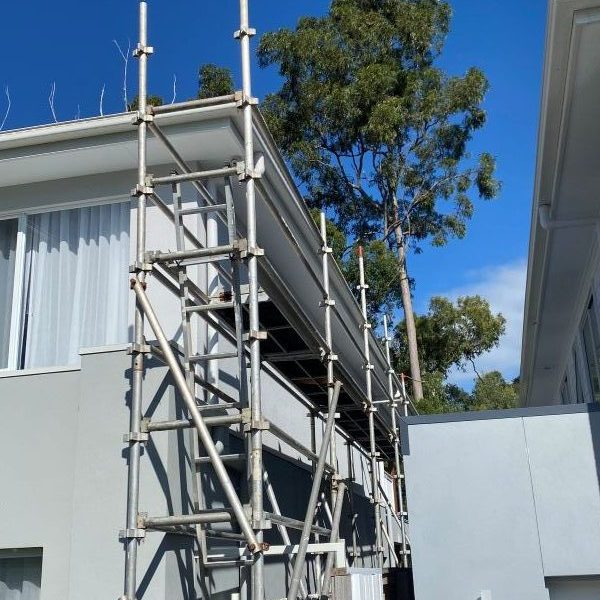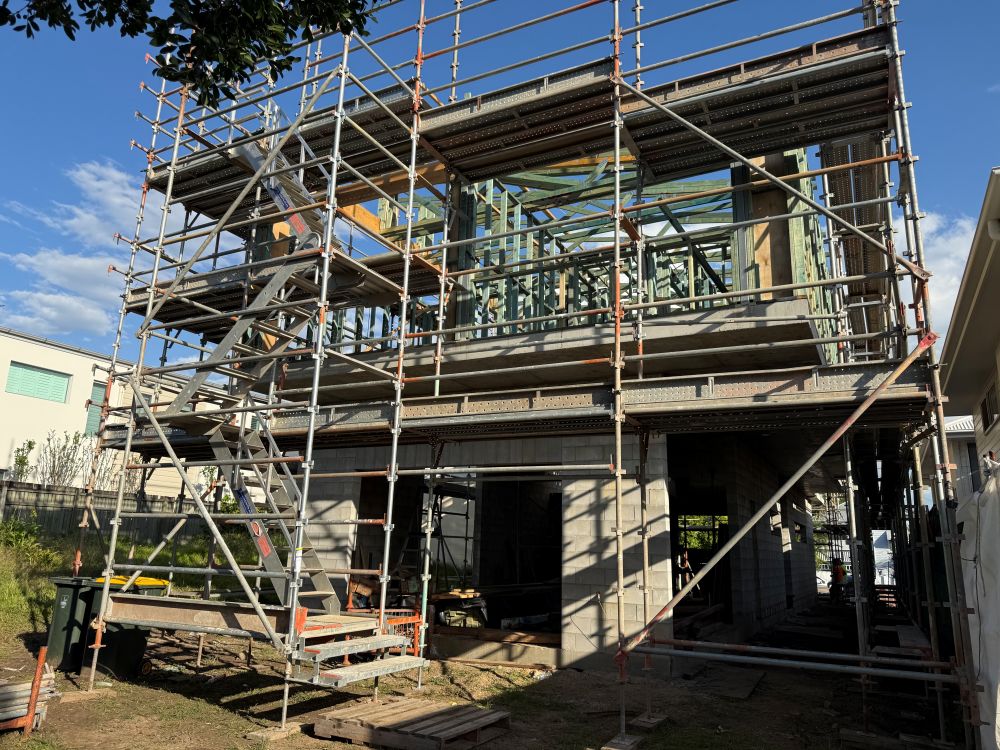Maximising Scaffold Load Capacity: Key Insights for Ensuring Safety and Compliance in the Construction Sector
Scaffold load capacity represents a crucial concept that defines the utmost weight a scaffold can securely support during diverse construction tasks. This vital aspect encompasses three main categories of loads that require careful consideration:
- The weight of the scaffold itself, commonly referred to as the dead load, which includes all structural elements of the scaffold.
- The weight of workers, tools, and materials situated on the scaffold, collectively known as the live load, which is essential for proper operational planning.
- External forces such as wind, rain, or vibrations that may influence the scaffold's stability, categorised as environmental load, which are critical for evaluating overall structural integrity.
Acquiring a thorough understanding of these loads is paramount, as they directly impact the cumulative stress exerted on a scaffold throughout its operational period. Adhering to these calculations is not just advisable; it is mandated under Australian law to protect the safety and well-being of all personnel engaged in construction activities.

A Detailed Guide on Effectively Using Our Scaffold Load and Height Calculator
Although a one-size-fits-all formula does not exist for every scaffold configuration, our scaffold calculator offers a straightforward and efficient method to acquire accurate estimates by simplifying crucial variables. This tool is specifically tailored for residential builders, homeowners, and scaffold hire professionals who adhere to the strict guidelines set forth by Australian OHS standards.
Step 1: Determine the Type of Work Required
Commence by identifying the nature of the work to be performed, which may encompass tasks such as roof restoration, exterior painting, solar panel installation, cladding, or rendering, each necessitating specific scaffold configurations tailored to the job.
Step 2: Specify the Number of Workers Involved
For example, you may need to input data for two workers who will be concurrently operating on the scaffold platform, ensuring that the load capacity is accurately calculated to accommodate their combined weight.
Step 3: Estimate the Weight of Materials to be Used
This could involve approximately 120 kg worth of rendering materials or tools that will be employed during the project, contributing significantly to the overall live load that the scaffold must support safely.
Step 4: Input the Height of the Scaffold Platform
For instance, the height could be specified at 4.5 metres above ground level, which is critical for ensuring adherence to safety regulations and standards.
Once this information is entered, the calculator will generate a recommended scaffold configuration that encompasses:
- The suitable duty class (e.g., Light, Medium, or Heavy) based on the specific load requirements.
- An estimation of the Safe Working Load (SWL) per bay, which is crucial for ensuring operational safety.
- The recommended type of scaffold (e.g., aluminium tower or steel frame) that is appropriate for the intended application.
- Essential safety features required, such as guardrails, soleplates, and stabilisers, which are vital for enhancing overall safety during operation.
- Compliance requirements pertaining to height, such as tie-offs that are mandated when working above 4 metres to ensure structural integrity and safety.
Exploring the Lack of a Universal Load Formula for Scaffolding Applications
While the scaffold calculator serves as a practical tool for generating estimates, scaffolders and engineers do not depend solely on a single formula for their assessments. Several significant factors contribute to this approach:
- Scaffold systems can differ drastically based on material and design (including aluminium, steel, modular, and tube-and-coupler systems).
- The intended function of the scaffold substantially influences its load capacity, with various tasks such as painting versus masonry imposing different demands on the structure.
- Different manufacturers offer varying platform strength and component ratings, leading to inconsistencies in load capacity evaluations.
Industry Standard Method for Calculating Safe Working Load (SWL)
Professionals often reference the following formula as a foundational guideline for their estimations:
Safe Working Load (SWL) per bay = (Platform Load Rating × Safety Factor) – Scaffold Component Weight
Detailed Example of Calculation:
- A platform rated for a maximum load of 600 kg, which is a common industry standard.
- Implementing a 4:1 safety margin: utilising only 25% of the rating results in 150 kg available for practical use.
- Subtracting the weight of the scaffold structure, which is 100 kg, to determine the usable load capacity.
- The resulting usable working load is 50 kg, which serves as a conservative estimate and typically does not reflect actual operational planning.
Due to the complexities and variations of real-world conditions, professional scaffolders generally adhere to manufacturer guidelines, engineering tables, and relevant local regulations rather than relying solely on this simplified formula.

Implementing Best Practices for Scaffold Evaluations by Professionals
Professional scaffold evaluations typically encompass several critical components to ensure safety and compliance:
- Reviewing manufacturer load data and verified span ratings for accuracy, which is essential for reliable assessments and compliance with safety standards.
- Calculating the total live, dead, and environmental loads to confirm adherence to safety regulations and guidelines.
- Ensuring compliance with AS/NZS duty class specifications to meet established industry standards and guidelines.
- Obtaining engineering sign-off for any custom or elevated scaffold configurations to ensure technical compliance and safety.
- Conducting comprehensive visual and structural inspections prior to scaffold use to identify and mitigate any potential hazards that may arise during operation.
Adapting Scaffold Practices to Address Environmental Conditions and Site-Specific Factors
Managing Wind Exposure in Coastal Queensland
In areas classified under wind zones N3 and N4, the lateral forces affecting scaffolds are significantly increased. As a result, scaffolds must be secured at shorter intervals, and additional bracing or shade cloth may be required, particularly during periods of high winds, to ensure structural stability and safety.
Considerations for Soil and Ground Conditions
When faced with unstable or sloped soil conditions, it is crucial to employ soleplates and adjustable base jacks to enhance the stability of the scaffold. Furthermore, sites with varying elevations may necessitate the implementation of levelled bay systems to maintain a safe working environment for all personnel involved.
Regulations for Working Above Four Metres
In Queensland, any platform that surpasses four metres in height necessitates thorough inspection and certification. A scaffold handover certificate is required under the Work Health and Safety Regulation 2011, ensuring compliance with established safety standards and protecting worker safety.
Crucial Safety Regulations for Scaffold Use to Ensure Compliance
- Work Health and Safety Regulation 2011 (QLD), which delineates fundamental safety requirements for scaffold usage.
- Managing the Risk of Falls at Workplaces (Code of Practice, 2021), which provides comprehensive guidelines for fall prevention and safety.
- AS/NZS 1576 and AS/NZS 4576 Standards for scaffold safety, which are vital for regulatory compliance and worker protection.
- High-Risk Work Licence (HRWL) is compulsory for any scaffold setup exceeding four metres in height, ensuring that qualified personnel manage the scaffold.
Site supervisors carry the critical responsibility of conducting regular inspections, particularly after adverse weather events or when significant changes occur in scaffold height or load, thereby ensuring ongoing compliance with safety regulations and standards.
In-Depth Case Study: Scaffold Application in Robina
In a recent construction project in Gold Coast, a homeowner in Robina required scaffolding for the purpose of repainting and rendering a two-storey exterior wall. The working height for this undertaking was determined to be five metres, and two tradespeople utilised approximately 200 kg of rendering materials and tools throughout the project, necessitating meticulous planning and execution.
Utilising our scaffold calculator, the recommended configuration was as follows:
- Scaffold class: Medium Duty, considered suitable for the specific tasks at hand.
- System type: Steel frame with timber planks, ensuring durability and stability under load.
- Additional safety measures: Full edge protection, soleplates for soft earth conditions, and wind mesh to mitigate wind exposure and enhance safety.
The scaffold successfully passed all necessary inspections and complied with Queensland’s OHS regulations, resulting in no downtime throughout the duration of the project, thereby demonstrating effective safety management and operational efficiency.
Critical Considerations for Scaffold Height and Load Capacity Calculations
Determining scaffold height and load capacity should never be approached as mere guesswork. In residential projects, this meticulous process is essential for ensuring safety, effectively managing costs, and adhering to local regulations.
Given the specific requirements applicable to Australian conditions, particularly in southeast Queensland, we strongly advise obtaining an accurate scaffolding quote and ensuring that all installations are conducted by qualified professionals to guarantee safety and compliance.
Get in Touch with CanDo Scaffolding Hire for Expert Guidance and Professional Services
For further information regarding our comprehensive range of scaffolding services, please do not hesitate to contact us at 1300 226 336 or send an email to theguys@cando.com.au at your convenience. Our team is ready to assist you.
We provide an extensive selection of scaffolding solutions, including void protection platforms and roof edge protection, customised to meet the unique requirements of any residential or light commercial construction project.
Understanding Scaffold Load Capacity for Residential Projects
The Article: Scaffold Load Capacity Insights for Residential Projects first appeared on https://writebuff.com
The Article Scaffold Load Capacity for Residential Construction Projects Was Found On https://limitsofstrategy.com
The Article Scaffold Load Capacity Insights for Home Building Projects found first on https://electroquench.com

